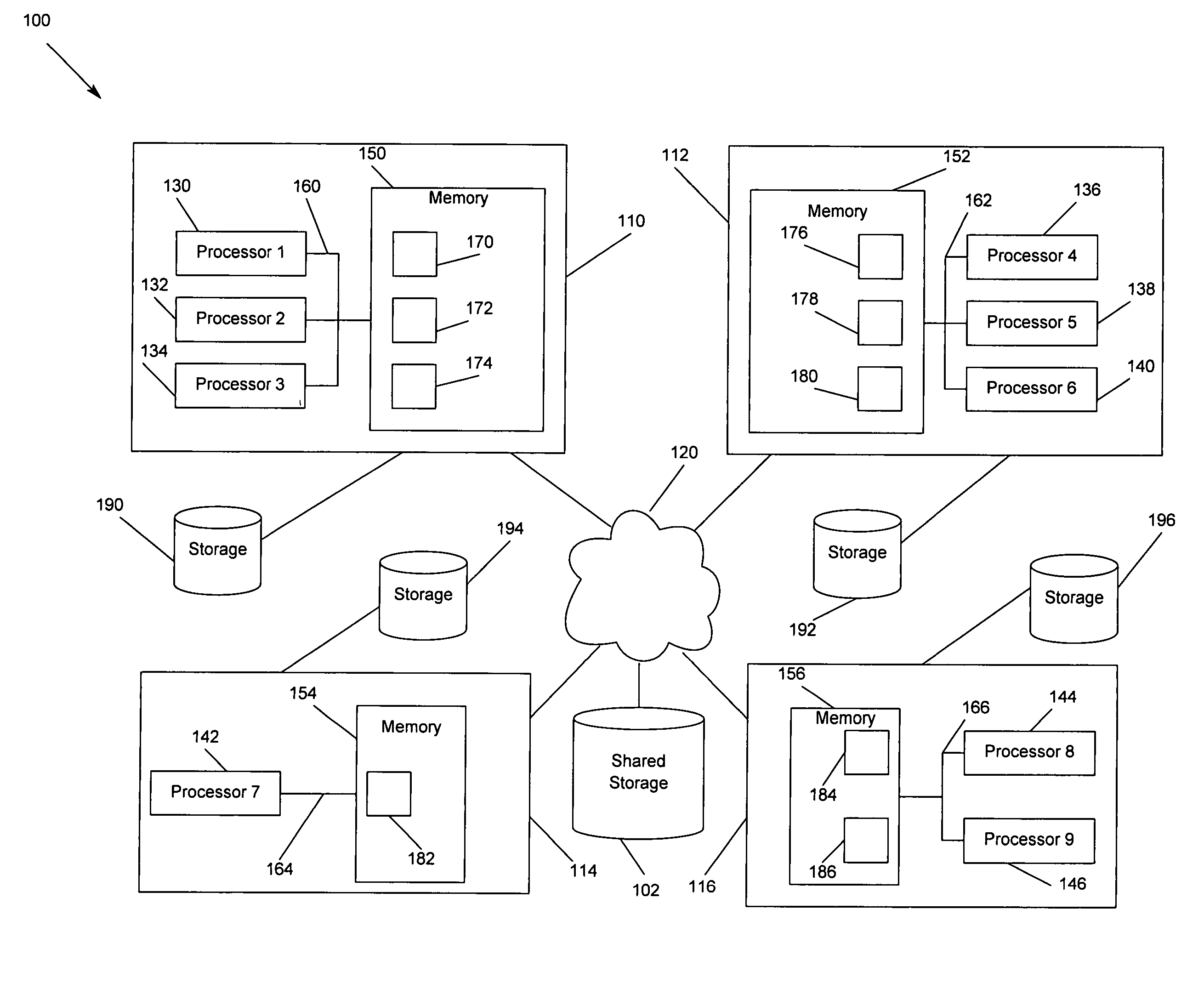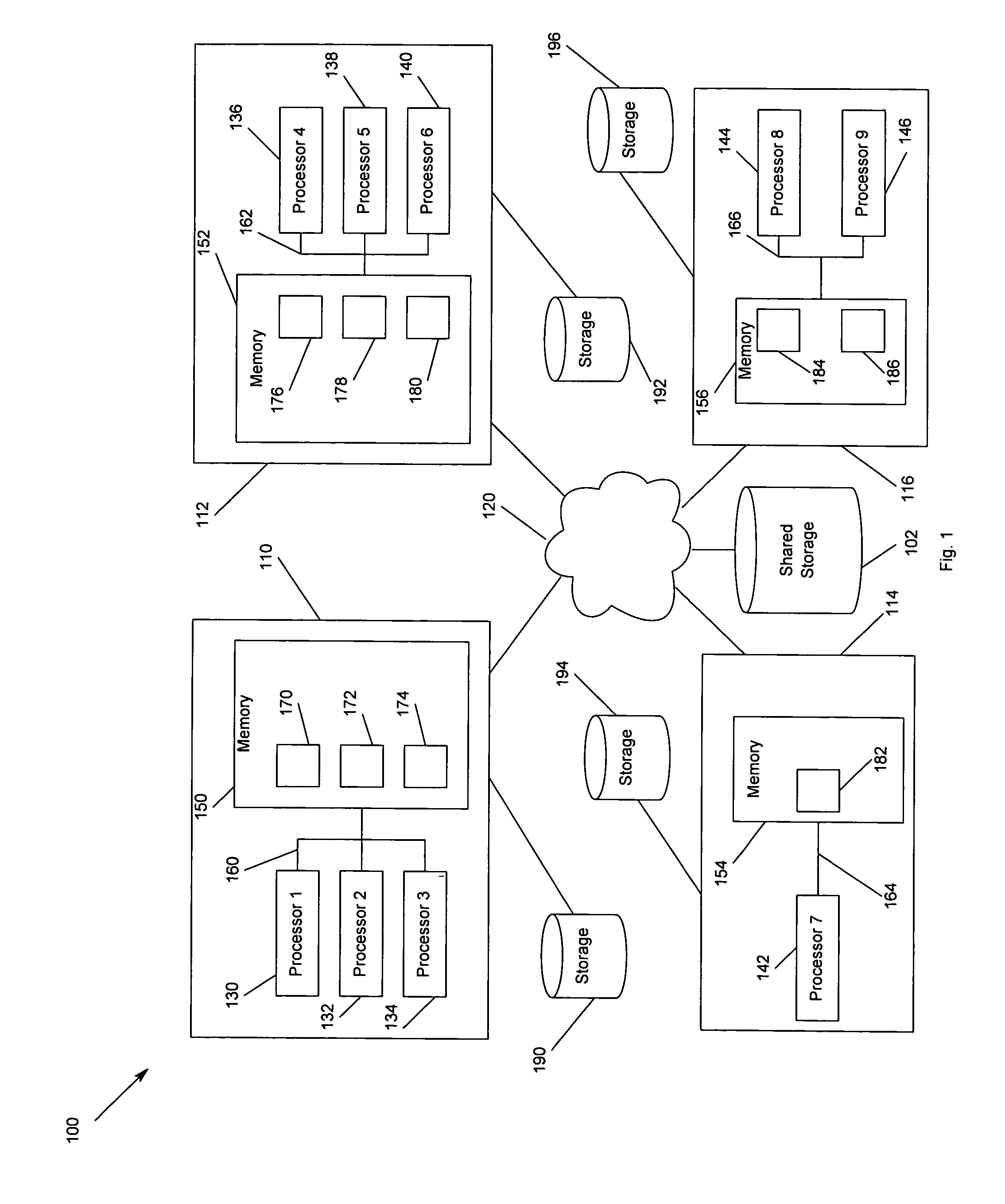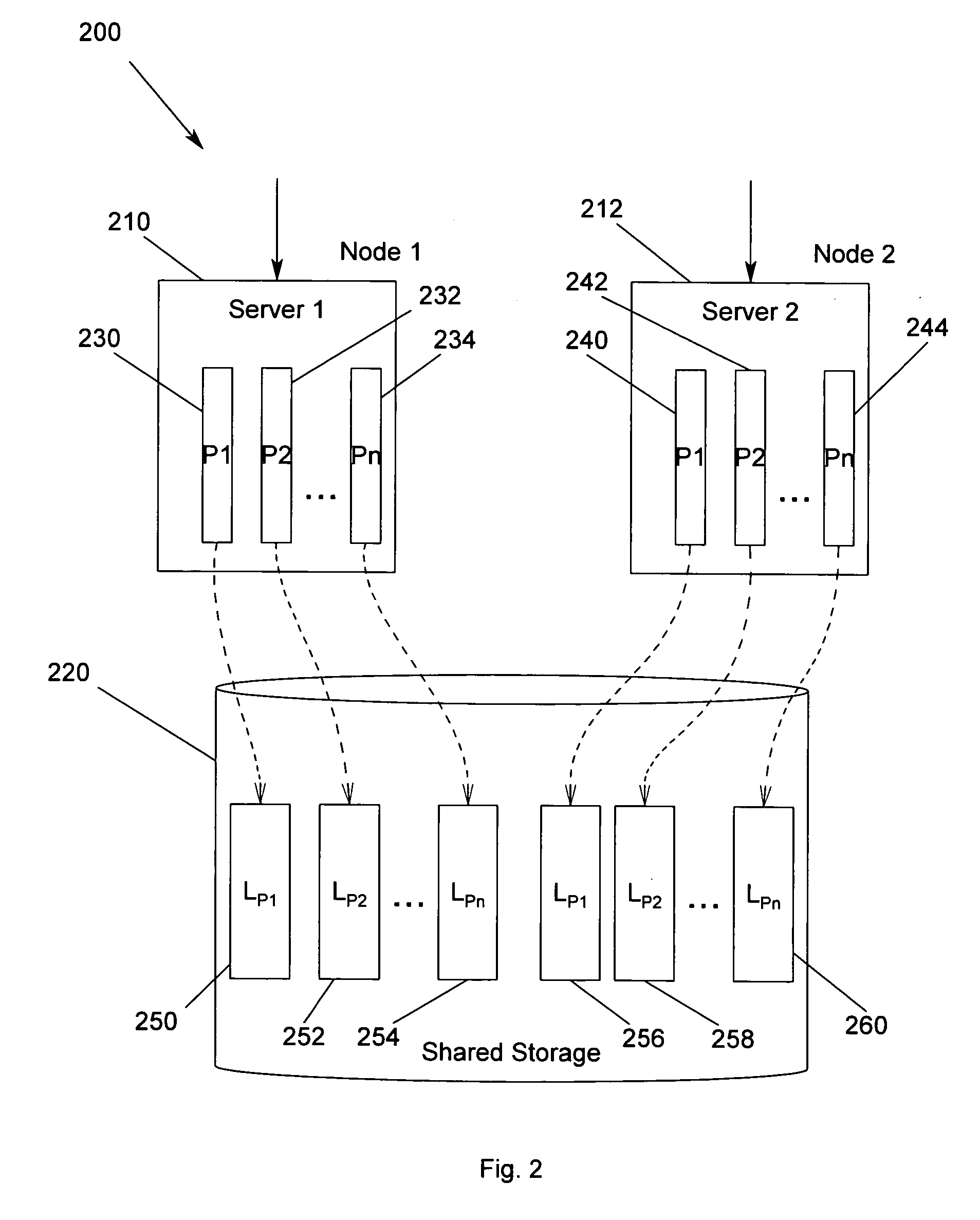Method, apparatus and program storage device for providing failover for high availability in an N-way shared-nothing cluster system
a program storage device and cluster system technology, applied in the field of parallel computer architectures, can solve the problems of limiting the scalability of systems with this type of architecture, and typically not being able to operate very well, so as to facilitate failover and log-based recovery
- Summary
- Abstract
- Description
- Claims
- Application Information
AI Technical Summary
Benefits of technology
Problems solved by technology
Method used
Image
Examples
Embodiment Construction
[0036] In the following description of the embodiments, reference is made to the accompanying drawings that form a part hereof, and in which is shown by way of illustration the specific embodiments in which the invention may be practiced. It is to be understood that other embodiments may be utilized because structural changes may be made without departing from the scope of the present invention.
[0037] The present invention provides a method, apparatus and program storage device for providing failover for high availability system architecture for cluster applications on a logical or physical shared-nothing cluster architecture. The present invention assigns cluster application data space partitions to each node in the cluster and partitions node's or server software's internal architecture in accordance with the application data partitions assigned to the node. In scoping each node's or server software's internal architecture to the cluster application data partitions assigned to th...
PUM
 Login to View More
Login to View More Abstract
Description
Claims
Application Information
 Login to View More
Login to View More - R&D
- Intellectual Property
- Life Sciences
- Materials
- Tech Scout
- Unparalleled Data Quality
- Higher Quality Content
- 60% Fewer Hallucinations
Browse by: Latest US Patents, China's latest patents, Technical Efficacy Thesaurus, Application Domain, Technology Topic, Popular Technical Reports.
© 2025 PatSnap. All rights reserved.Legal|Privacy policy|Modern Slavery Act Transparency Statement|Sitemap|About US| Contact US: help@patsnap.com



